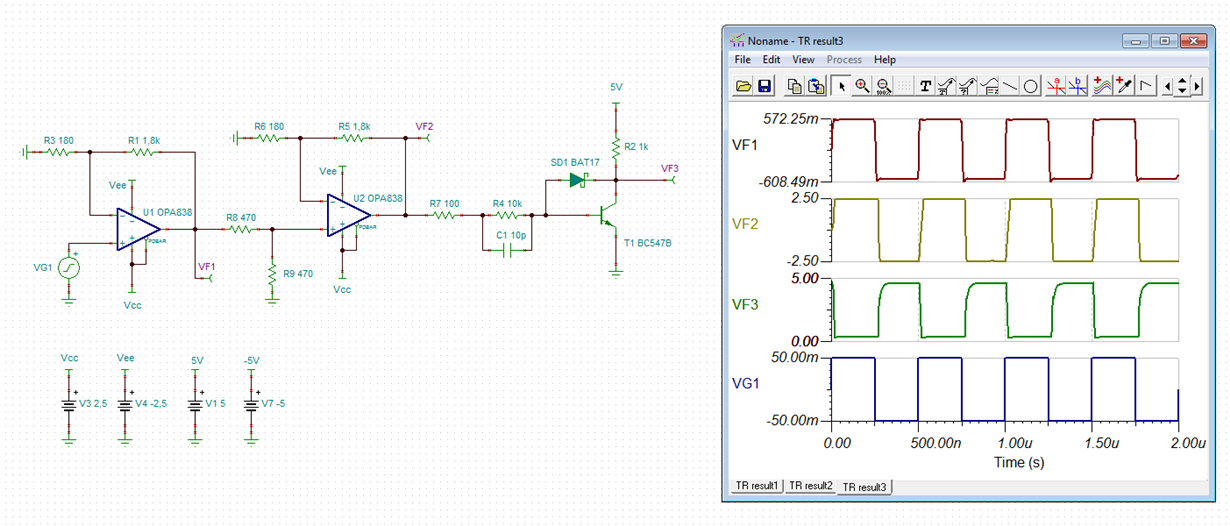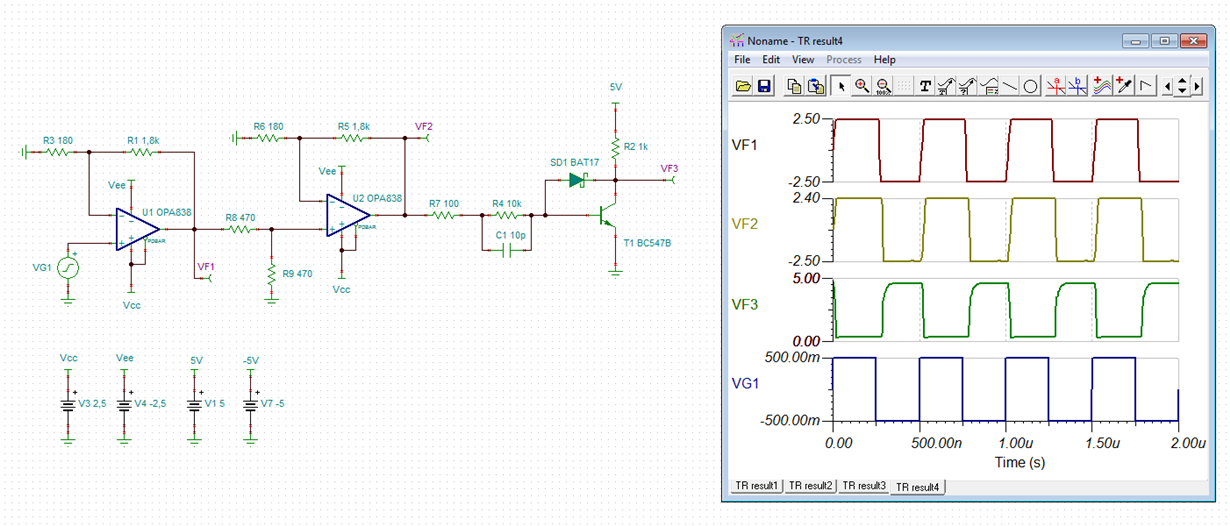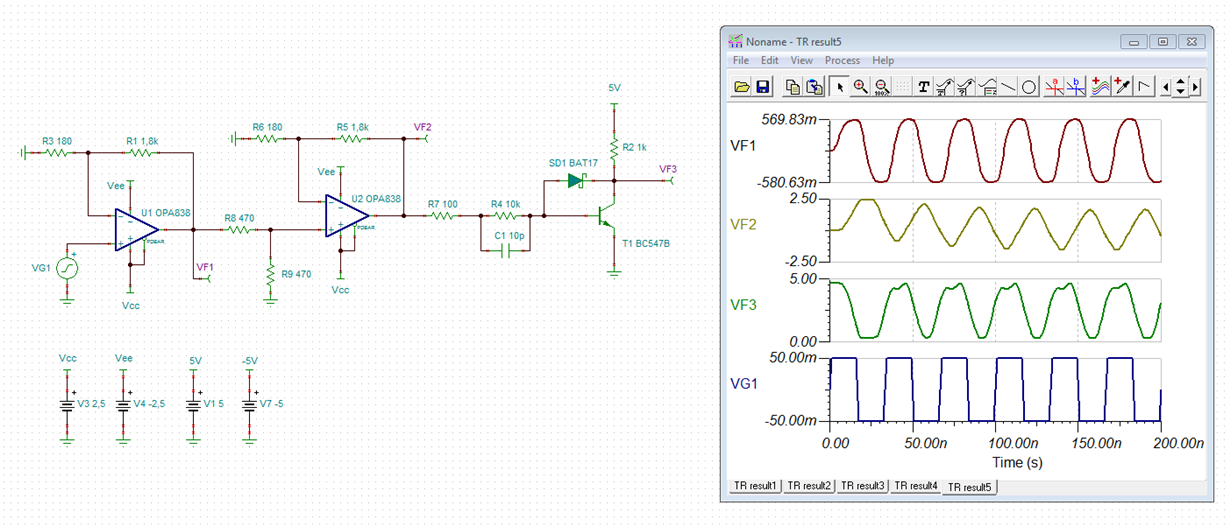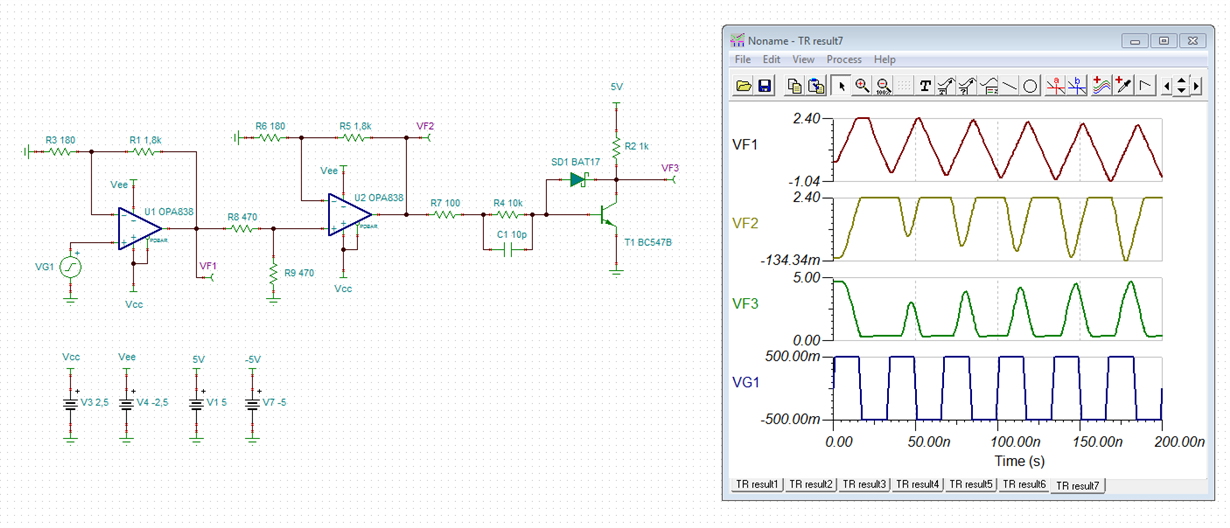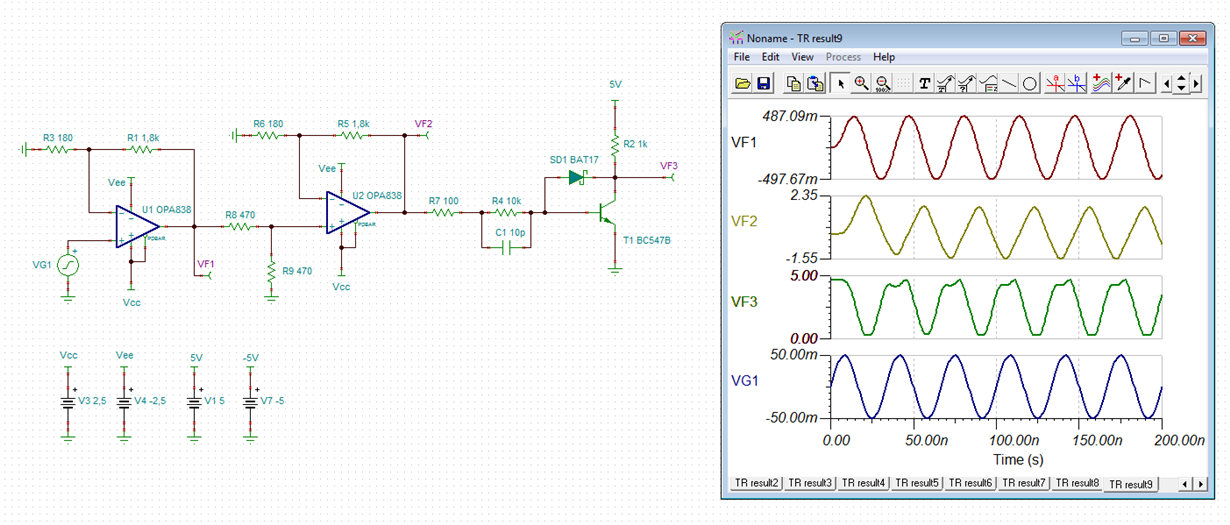Other Parts Discussed in Thread: OPA615, TINA-TI
Hi - I have a signal that varies between 2MHz and 30MHz and can also vary in amplitude between 100mV peak to peak and 1000mV peak to peak. I'm attempting to count pulses using a counter IC which requires input levels of 1.5V (maximum low level) to 3.5V (minimum high level). I was looking at the OPA838 as a possible mechanism to accomplish amplifying the signal. For example using a single supply of 5V, setting AREF to 2.5V and a gain of 5 - this would work for the whole frequency range but only for higher amplitude signals (i.e. it won't work below 400mV p-p). Is there a way to use the OPA838 and have variable gain? Is there some other IC that is a better choice? Any help would be appreciated - thanks.


